Celebrating 10 Years

















































Many things in the field of medicine are absolute. Black and white. Positive or negative. Hot or cold. However, when considering a workers’ compensation case, circumstances and the actual course of injury may not always be imminently clear.
When there is an accident or event that causes direct injury, questions can be answered in a straightforward manner. When the injured worker has a preexisting condition, the narrative and subsequent treatment require a degree of historical perspective.
In the state of Georgia, preexisting conditions are defined as “a medical problem that existed prior to the workrelated injury that is the reason for filing a claim.” Further, Georgia workers’ compensation laws allow aggravation of preexisting conditions due to work-related injuries to be covered by the workers’ compensation program.
From a pain management view, a preexisting condition often makes a workers’ compensation claim complex. Questions may arise such as:

• Is the injury truly preexisting?
• Is it an aggravation?
• Is it a side effect of treatment from other colleagues on the workers’ compensation medical team?

Claimants can have previous large joint (shoulder, knee, hip) injuries, degenerative disc disease, and systemic diseases, such as arthritis. The goal of the workers’ compensation treatment team is to return the injured worker to his/her pre-injury condition (baseline), not necessarily render the patient pain free. Many times, companies have completed pre-employment questionnaires, tests, and functional physical exams. It is helpful to have this information when patients are seen in the office as it can help determine the direction of care.
Patients sent to a pain management and spine physician who are being treated at a pain clinic prior to their work injury can be particularly problematic to treat. The physician must carefully evaluate their level of pain related to injury versus their baseline pain. Additionally, any interventional procedures performed must be evaluated carefully to account for a minimum level of pain the claimant is accustomed to without the current injury.
Pain management physicians must rely on prior medical data, detailed and extensive physical exam skills, and outside information such as surveillance, etc. Further, physicians must evaluate imaging such as MRIs and CT scans using “context clues.” For example, degenerative disc disease, lumbar facet arthropathy, and mild bulging discs are common findings on imaging. However, these findings usually are not related to an acute event/injury. Most likely, if there is pain associated with this particular region of the body, it is an aggravation of this pathology. If patients continue to have pain even after there has been treatment of the aggravation, a functional capacity evaluation may be warranted.
Deciphering preexisting versus current injury versus aggravation can definitely be confusing and a grey zone in many situations. Clinical judgment and objective data must be equally weighed.

Ankur Patel, D.O., RPH, is the founding/managing partner of Southern Pain and Spine Associates, LLC. He is a board-certified anesthesiologist, pharmacist, and fellowship trained interventional pain management physician. Dr. Patel is dedicated to advancing patient care to the highest levels via a conservative approach with medications while using his interventional pain management training. He is a graduate of the prestigious pain fellowship program at Texas Tech University Health Sciences Center in Lubbock, Texas. Southern Pain and Spine has locations in Athens, Gainesville, Jasper, Newnan, and Fayetteville.



We have been talking about the holistic approach for a few years now, prompting several questions…
• What is the holistic approach?
• Is the holistic approach even possible in Workers’ Compensation?
• Why are we even talking about the holistic approach?
• How do we get started?
Here are a few answers. The holistic approach requires we provide support that looks at the entire person—the whole person—not just their physical health needs. Holistic support considers physical, emotional, social, and spiritual well-being.
The holistic approach is not only possible, but it is the best approach to use in Workers’ Compensation. It empowers the recovering worker and at the same time considers the entire worker’s physical, emotional, social, and spiritual well-being. When that occurs, the workers feel heard, understood, and can approach their claim more positively. They begin to view their claim clearly and their interactions are seen through a more positive lens.
Why are we talking about the holistic approach? Because for the Workers’ Compensation industry to move forward, we have to be better for the industry to be seen in a more positive light. Those most impacted people must have positive experiences. That starts with all of us.
For so many years, we have all focused on the accident, injury, and settlement and have, at times, forgotten about who is at the center of this process: the recovering worker. The pandemic has required us to take stock of what we do every day and how we can do it and be better.
Keeping the recovering worker at the center, as the focal point of what we do every day, we accept and decide to positively influence their experience. Also, putting yourself in the shoes of the recovering worker will help you to be more compassionate and diligent in how everyone participates in the system.
When considering the compensability of an accident, we can be considerate of informing the workers of other options for recovery, i.e., health or auto insurance. When there is a delay in the payment of indemnity benefits, communicating with the employer about the importance of providing payroll timely will help in getting the indemnity out sooner while at the same time communicating with the employee if there is a delay and the cause of the delay and empowering their involvement in the process. Leaving a person uninformed lets them create a reality that may not exist. They may feel ignored, thrown away, or discarded, when in fact, there is a delay because payroll hasn’t been provided, the contact person is on vacation, or several other reasons. In Workers’ Compensation, silence can be deafening.
We can start applying the holistic approach by instituting communication. Open lines of communication allow us to keep everyone who is involved informed. The adage that information is key is so applicable to Workers’ Compensation. Feeling heard and understood begins with open and consistent lines of communication. Starting with communication, we can holistically participate in the Workers’ Compensation system in a positive way to impact the lives of our workers a helpful whole way.
Together, let’s make a difference by holistically participating in the Workers’ Compensation industry. Let’s be the change agents the system needs. Let’s be the reason the industry has a positive impact on the lives of recovering workers.
Ya’Sheaka C. Williams is a partner in the Tampa office of Quintairos, Prieto, Wood & Boyer, P.A. She represents employers, self-insured employers, and insurance carriers in all aspects of workers’ compensation claims, appearing before Compensation Claims judges throughout Florida. She was recognized as an expert in workers’ compensation law by the Florida Bar when she became Board Certified by the Florida Bar Board of Legal Specialization and Education. She is also a Certified Workers’ Compensation Law instructor by the Florida Department of Financial Services and has presented numerous classes and seminars to employers and claims adjusters throughout Florida.

Low back pain is a very common problem in the population as a whole and especially in the workplace. Evaluating the patient with low back pain can be difficult, especially in the setting of a workers’ compensation injury.



Initial evaluation should include a detailed history of the injury, a comprehensive physical examination, and review of radiographic studies (if indicated or provided). Most importantly, one must rule out serious pathology, including fractures and/or spinal cord or nerve root dysfunction. In addition to these injury-related problems, consideration must also be given to the possibility of tumor or infection. Usually a good history and physical exam will allow the physician to quickly determine the severity of the problem.
When performing a physical exam on a patient with low back pain from a work-related injury, the use of Waddell “non-organic” signs can potentially help determine the likelihood of response to treatment. They must be used with caution; however, as several authors have suggested that these findings may not be as helpful as once thought.

Waddell signs:
1. Superficial tenderness: the patient’s skin over a wide area of the lumbar spine is tender to light touch or pinch
2. Non-anatomical tenderness: the patient experiences deep tenderness over a wide area that is not localized to one structure and crosses over non-anatomical boundaries
3. Axial loading: downward pressure on the top of the patient’s head elicits lumbar pain
4. Torso rotation: lumbar pain is elicited while the provider passively and simultaneously externally rotates the patient’s shoulder and pelvis together in the same plane as the patient stands. It is considered a positive test if pain occurs within the first 30 degrees of rotation
5. Distracted straight leg raise discrepancy: the patient complains of pain during a straight leg raise during formal testing, such as when supine, but does not on distraction when the examiner extends the knee with the patient in a seated position
6. Regional sensory disturbance: the patient experiences decreased sensation fitting a stocking-like distribution rather than a dermatomal pattern.
7. Regional weakness: weakness, cogwheeling, or giving way of many muscle groups that are not explained on a neuroanatomical basis
8. Overreaction: a disproportionate and exaggerated painful response to a stimulus that is not produced when the same provocation is given later. These responses can include verbalization, facial expression, muscle tension, or tremor
The number of Waddell signs that are positive should be noted, as three or more has been shown to be more predictive.
Once the H&P are completed, imaging studies are often ordered/reviewed. X-rays, CT, and MRI are often utilized depending on the injury, physical exam findings, and/or response to treatment. MRI must be interpreted with caution; however, because there is a high incidence of pathology found in asymptomatic patients. Numerous studies have shown that findings of disc bulges, disc protrusions, facet arthritis, and stenosis are often seen in patients with no history of back pain. However, disc extrusions are not typically seen in asymptomatic patients. The patient’s complaints, exam findings, and imaging studies must be interpreted together in order to be useful.
The large majority of patients presenting with low back pain can be treated non operatively with time, physical therapy, chiropractics, heat/ice, NSAIDs, etc. Multiple studies have shown that a brief period of rest (1-2 days), followed by a quick return to normal activities will result in the best outcomes. More invasive treatments including epidural steroid injections and facet injections can be considered for patients who have not responded to lesser treatments. Ultimately, in very select cases where the pathology is clear and the patient is reasonable, surgery can be considered. The outcomes of surgery in the workers’ compensation population have clearly been shown to be inferior to the outcomes in non-WC patients; however, it can be a very useful tool in the right patient with the appropriate pathology. Surgery usually involves decompressing neural structures (laminectomy, foraminotomy, discectomy), with the possibility of fusion and/or disc replacement. These can be done through a myriad of techniques, both open and minimally invasive.
While low back pain can be a challenge to treat in this population, it is one of the most significant causes of lost work time and expense. It should be evaluated and treated expeditiously and judiciously.
William B. Dasher III, M.D. is a board certified, fellowship trained orthopaedic spine surgeon at OrthoGeorgia in Macon, GA. He specializes in the conservative and surgical management of all spinal conditions and is trained in the latest minimally invasive robot-assisted techniques.

OrthoGeorgia physicians provide comprehensive orthopaedic care in order to get the injured worker back on the job as successfully and quickly as possible. Our onsite team of Certified Workers’ Compensation Professionals (CWCP) help manage the process every step of the way.
(478) 745-4206














Low back pain is a very common problem in the population as a whole and especially in the workplace. Evaluating So, if you don’t like the bad decision in your workers’ compensation claim, what can you do? It’s simple in that, you can appeal or not appeal. However, not every decision is appealable. You first have to have a final judgment. However, a writ of mandamus is a way to appeal while the case is still pending in the trial court.
Mandamus is an extraordinary and drastic writ that the appellate court will issue only when:
1. the petitioner has a clear legal right to the relief sought;
2. the respondent has an imperative duty to perform and has refused to do so;
3. the petitioner has no other adequate remedy; and,
4. the appellate court’s jurisdiction is properly invoked.
Because mandamus is an extraordinary remedy, the standard by which the appellate court reviews a petition for the writ of mandamus is to determine whether the trial court has clearly abused its discretion.
The use of mandamus review has essentially been limited to well-recognized situations including making sure that an action is brought in the correct court (e.g., subject-matter jurisdiction and venue) and by the correct parties (e.g., personal jurisdiction and immunity), reviewing limited discovery rulings (e.g., patently irrelevant discovery), and reviewing erroneous decisions by a trial court where there is a compelling reason not to wait for an appeal (e.g., abatement).
It is important to keep in mind that mandamus means the case is not yet before the appellate court. As the Petitioner, you are asking the appellate court to hear a case that still belongs in the trial court so the appellate court needs to have all of the information about the case provided to them in the writ.
The ore tenus rule is also important when considering appeals. It essentially says as an appellate court we are not going to second guess the trial court on findings of fact based on ore tenus evidence, and the judgment based on those findings will not be disturbed unless those findings are erroneous and against the great weight of the evidence. It is grounded upon the principle that when a trial court hears oral testimony it has an opportunity to evaluate the demeanor and credibility of the witnesses.
A few examples of routine issues taken up on appeal are medical causation, the last injurious exposure rule, venue, and legal causation. On the other hand, issues that are not appealable include issues of fact relating to a disability rating, the extent of disability, notice, and he said/she said situations with conflicting compensability stories.
Lastly, it is important to keep in mind the practical considerations of appealing. For instance, the cost of appeal may outweigh the benefit of appealing especially in those smaller claims where exposure is not high. It’s also important not to let emotions get in the way and to make sure you aren’t going into it to prove a point. Finally, it is important to consider whether you are going to make good laws or bad laws.
If you have any questions about when you can appeal a workers’ compensation decision, feel free to reach out to me at Lauren@esw-law.com.





The 2022 session was interesting. House Bill 959 passed, but the final version no longer included the amendment of section 120.541, which imposes safeguards on the implementation of administrative rules. Senate Bill 1874 started as a much broader proposal with adjustments to 15 chapters of the Florida statutes. It was laid on the table in favor of HB 959 instead.
Just as there are broad proposals, bills can be very brief. HB 689 was filed to amend section 112.1815. Fla. Stat. That section created compensability for mental injuries without a physical trauma. It is commonly referred to as the PTSD statute. It was first passed in 2018 and afforded compensability when a “first responder” suffered posttraumatic stress disorder from any of 11 “qualifying events” listed in the statute. This amendment changes the statute of repose on the potential to collect benefits for PTSD.
Additionally, SB 542 was passed, and signed by the governor. This was discussed in 2021 and illustrates the maxim that bills sometimes require multiple attempts to achieve passage. It interests the workers’ compensation community because we have a fair number of opportunities to examine the “employer/employee relationship” in various disputes. The Florida workers’ compensation law depends on the employment relationship, and intent of the parties may be of relevance.
The passage of SB 542 is not an amendment of the Florida workers’ compensation law, and may have largely escaped attention. It amends Chapter 448.111, the “General Labor Regulations.” There is clarity in 448.111(2) stating this new law applies to the evidence in any “cause of action brought under s. 440.10, s. 440.192, s. 440.38, s. 440.381.” Those are clearly portions of the workers’ compensation law.
The law impacts determinations of employee status based upon “actions of a business” during either a “public health emergency” (one might here reflect upon our recent COVID, but it seems applicable to emergencies of less systemic effect than a pandemic), or “a state of emergency declared by the governor.” The statute provides that various “actions of a business . . . may not be used as evidence” when a worker is seeking “to recover lost wages, salary, employment benefits, or other compensation.”
Essentially, if a business treats those “engaged individuals” (note that it avoids the used of conclusory labels like “employee”) with dignity and respect as regards amelioration or avoidance of some urgency such as the SARS-CoV-2 pandemic, that treatment cannot be used as evidence that the employer must have considered the “individuals” to be “employees.” Thus including such “individuals” in some provision of compensation or training or health care does not support that the persons were “employees.”
The law essentially encourages good behavior and equal access to emergency response such as education, training, safety devices or precautions. It should alleviate angst and questions in the setting of emergencies of various descriptions. The law will perhaps encourage and facilitate the actions of employers in responding to the challenges of health and other emergencies without raising questions of how their emergency response might be used as evidence in regards to later analysis of employer/employee relationship and the Florida workers’ compensation law.
The legislature also removed the constraints regarding the operation of OJCC offices. Following the deletion of the statutory mandate for 17 district offices, the Division of Administrative Hearings this spring consolidated District Lakeland into Tampa and Sarasota, District Port St. Lucie into West Palm Beach, and District Sebastian into Daytona and West Palm Beach. Part of that realignment will see all OJCC mediations held by Zoom unless an inperson mediation is requested.
Thus, 2022 was not completely quiet in workers’ compensation. Some of these changes may be seen as landmarks, but there were no major changes in the substantive law of Chapter 440.
David W. Langham, has been the Florida Deputy Chief Judge of Compensation Claims since 2006. His legal experience includes workers’ compensation, employment litigation, and medical malpractice. He has delivered hundreds of professional lectures, published over forty articles in professional publications, and has published over 950 blog posts regarding the law, technology, and professionalism. David is a student, a teacher, a critic, a coach, and a leader. He lives in Pensacola, Florida, with his wife, Pamela Langham, Esq.










There are 4.9 million workers’ compensation claims filed every year. That means every day, there are thousands of claimants, adjusters, attorneys, and employers interacting multiple times a day in an attempt to resolve these claims.
A workers’ compensation claim moves fast and generates countless emails, phone calls, Zoom meetings, and documents in its wake. One key element of a claim that may be forgotten in the piles of emails and looming deadlines is the ethical obligations guiding interactions between employers, adjusters, attorneys, and injured workers.
Outlined here are a few pitfalls to avoid for those involved in these claims so the resolution of claims may continue smoothly.


There are several reasons to directly contact an injured worker who may file a claim. Early in the process, when the claimant has not retained an attorney, direct communication between the injured party and the employer or insurance adjuster may be the best way to gather the relevant information necessary to resolve the claim. Furthermore, employer communication with an injured worker soon after the accident is one of the best ways to avoid litigation altogether.
A study conducted by the Workers’ Compensation Research Institute found that an employer who calls the injured worker within one week of the accident and communicates the employee’s value to the company reduces the chance of litigation by fifty percent (50%.)
However, that communication gets more complicated once the claimant retains legal counsel. When a claimant has legal representation, all communication with the injured worker regarding the claim must be made through the claimant’s counsel. This ethical obligation attaches directly to the attorney, but can implicate insurance adjusters and employers, as well.

For example, Georgia’s Rules of Professional Conduct, Rule 4.2, provides that an attorney cannot communicate with a person represented by counsel without the consent of that person’s legal representation. However, it is not just the attorney who should be concerned with this rule. Ex-parte communication—communication with a party without their attorney present—can create confusion, and undue influence on the process, and may lead to an ethical violation. The upshot is this: the best practice for attorneys, insurance adjusters, and employers involved in a workers’ compensation claim is to always deal with a represented claimant through the claimant’s attorney. If communication with the claimant is necessary, always get their counsel’s prior consent before contacting the claimant.
Depending on the state, the rules governing the ability of the employer, adjuster, or defense attorney to speak directly with the claimant’s doctor will vary. In Georgia, the state Supreme Court has held that the privacy requirements between doctor and patient typically subject to HIPPA’s purview are not in play. The legislature of Georgia had already enacted OCGA 34-9-207(a) which in part states that the employee is “… deemed to have waived any privilege or confidentiality concerning any communication related to the claim or history of the treatment of injury arising from the incident that the employee has had with any physician, including but not limited to, communications with psychiatrists or psychologists. The waiver shall apply to the employee’s medical history concerning any condition or complaint reasonably related to the condition for which such employee claims compensation.”
In Arby’s Restaurant Group, Inc. v McRae, 292 Ga. 242 (2012), the Georgia Supreme Court held that there were no legal grounds that prohibited an ex-parte oral communication between a treating physician and an employer to the extent confidentiality is waived by an employee in a workers’ compensation case. Of course, the Court in dicta made it clear that communications outside of the purview of the employee’s specific accident and injury were still off bounds. Other states still bar ex-parte communications with full HIPPA protections for injured workers.
The key to resolving any claim is good communication between all parties. This is a truth that prevails across jurisdictions.
 Paula Smith practices Georgia Workers’ Compensation Defense with Willson Jones Carter & Baxley in Atlanta. She has thirty years of experience representing both self-insured and commercially insured employers in a wide array of workers’ compensation matters.
Paula Smith practices Georgia Workers’ Compensation Defense with Willson Jones Carter & Baxley in Atlanta. She has thirty years of experience representing both self-insured and commercially insured employers in a wide array of workers’ compensation matters.












It is statewide election time in Georgia. Every four years, our state constitutional officers are up for election, so here we are in 2022. That means races for every position from Governor to Labor Commissioner are up for the voters’ choice. Throw in a United States (US) Senate race, and we have a full campaign season Of course, every seat in the Georgia General Assembly is up, as well.
We have eight (8) constitutional officers up in Georgia. This year, there are only three (3) with no incumbent running. Those offices are Lt. Governor, Agriculture Commissioner, and Labor Commissioner. Current Lt. Governor Geoff Duncan chose not to run so the race is between State Senator Bert Jones (R) and Charlie Bailey (D). In the Agriculture Commissioner race, Incumbent Gary Black ran in the US Senate primary creating an open seat. State Senator Tyler Harper (R) and Nakita Hemingway (D) are vying for that position. Finally, the last open race is for Labor Commissioner between Republican State Senator Bruce Thompson and Democrat State Representative William Bodie.
Of course, the biggest race to watch is the rematch between Governor Brian Kemp and former state representative Stacy Abrams. Governor Kemp won a close race in 2018 and this should be a competitive and spirited race right up to election day. The campaign is already in high gear as evidenced by all the ads seen everywhere. We will be watching this race closely as the Office of the Governor has a huge role in the Workers’ Compensation industry as he appoints the state board members as well as influences legislation.
The offices of the Attorney General, Secretary of State, Insurance Commissioner, and State School Superintendent are all currently held by Republican incumbents and have Democrat challengers.
Over in the General Assembly, all 236 members are up for re-election as they all serve two-year terms. In the House, there are 180 total members with 41 open seats due to retirements or members seeking another office. Currently, there are 103 Republicans, 76 Democrats, and one (1) open seat. While there are several competitive races, we do not believe the majority of seats will flip to unseat the current Republican Majority. This will mean there should not be major changes in key committee chairmanships and leadership positions.
In the State Senate, there are ten (10) open seats out of a total of 56 seats. Again, these openings were created by retirements and members seeking another office. The current breakdown by party is 34 Republicans and 22 Democrats. There are some competitive seats here, but again, we do not believe the current Republican majority will change. There will be a new Lt. Governor and Senate President Pro Tempore, so the opportunity for major changes in committee chairs and leadership exists. We will monitor this after the November elections when the Senate caucus elections take place.
For political junkies like me, this is “The Big Game” of elections. It keeps us busy through the fall as we prepare for the next legislative session in January. We will update you on the elections and other changes as they occur. Enjoy the balance of your summer and fall. And, most of all, please get out there and vote.
Jerry Keen serves as President and CEO of Joe Tanner and Associates. JTA has a long track record of service to an elite list of clients in Georgia. Please visit our website at www.joetanner.com.


Organizations choose to self-insure particular exposures because they believe it is more cost-effective to do so over time. For reasonable losses, with a small likelihood of deviation from year to year, it makes more sense to retain the risk rather than pay overpriced premiums to transfer the risk to an insurance company.
Advanced risk financing software tools and techniques are assisting firms in generating scenarios that evidence the long-term value that can be created from retaining a specific amount of loss exposures.
An important technique resulting from increased self-insured retentions and larger deductibles is the need to transfer those risks to responsible parties. This technique, identified as contractual risk transfer, should be implemented within organizations that make large out-of-pocket payments for losses before true insurance is triggered within their coverage portfolio. Contractual risk transfer is the risk management technique of allocating the risk among contracting parties.
Every organization enters into contracts. These business agreements encompass many risk-related provisions. These provisions specify which contracting party is responsible for loss or damage and what insurance is required of the responsible party. The parties to a contract negotiate and agree on risk transfer terms that become the governing law for the particular business transaction. If performed effectively, placing responsibility for risk on the parties is consistent with their ability to control and insure against that risk.
During the audit phase of identifying, analyzing, evaluating loss exposures, and implementing a risk management technique, a firm should consider all of its contractual obligations with outside vendors and contractors. The inherent risks in the agreements with these customers can create a substantial financial impact for an organization in the event of a loss in which the company makes payments for losses not under its control.
Contractual risk transfer is generally considered a risk financing technique. When financing risk, a risk manager decides whether to retain or transfer the risk. If transfer is the chosen technique, the risk manager must decide whether to shift losses to an insurance company or another party through contractual provisions. The indemnification, hold harmless and insurance provisions affect the allocation of risk in a transaction. Indemnity clauses alter the way liability is allocated between contracting parties by requiring one party to indemnify the other for liability to third parties. The overall intent of the indemnification clause is really to protect the company from loss of funds.
A hold-harmless agreement is a form of an indemnity provision in that one party is agreeing to assume the responsibility of another. In the hold-harmless arrangement, the indemnifying party, the indemnitor, agrees to reimburse the indemnitee for all losses, no matter who is at fault.
The insurance coverage required in a contract is another key provision found in contractual risk transfer. The coverages act as the backup to the indemnification language. By requiring that a contractor or vendor is properly insured, the company can be assured the contractor will have sufficient funds to pay for a claim. It is important to note the types and amounts of insurance, and most importantly an additional insured endorsement will coincide with the indemnification provision. Again, the insurance should reinforce the terms of the indemnity clause.
As mentioned earlier, the basic premise behind the indemnification clause is to pass the responsibility of loss to the negligent party. In most cases, independent contractors are not working under the direction and control of the company that hired them to perform the work. Therefore, if the contractor is involved in serious loss resulting in high bodily injury or property damage expenses, the company should not have the responsibility of paying for claims that could arise. The company expects the contractor to step in and cover costs the company might incur as a result of the contractor’s actions.
The type of work to be performed or the product to be sold, per the terms of the agreement will also have a
profound effect on which indemnification language is chosen. A company hiring a contractor to enter their facility and perform asbestos abatement may want to require an indemnification agreement in which the indemnitee has extremely little potential for out-of-pocket expenses, given the fact that any claim resulting from asbestos abatement is most likely going to be a costly piece of litigation.
The second most important aspect of contractual risk transfer involves the requirement of insurance coverages from the indemnitor. Without true loss transfer to an insurer, a company may not be certain that the indemnitor will have sufficient funds to pay for a loss. Indemnity agreements and other risk transfer techniques are only as good as the indemnitor’s financial ability to meet its contractual obligation to indemnify.


Although the transfer of risk is completely independent of insurance coverage, the indemnitor’s inability to fulfill its indemnity obligations does not relieve the indemnitee of its liability to a third party. For that reason, indemnities should take reasonable steps to assure the needed funds will be available when a loss occurs. Reviewing an indemnitor’s financial records is not practical, so insurance becomes a necessary obligation for contracts.
The overall goal when drafting insurance requirements is to differentiate between the types and levels of coverage that are carried out by the contracting parties. Current insurance language should be used rather than obscure or outdated terminology. The requirements should also reflect common industry practices and approaches to providing commercial line insurance.
Every organization enters into contracts to conduct business. A written contract describes the purpose of a business relationship, the responsibilities of each party to the contract, the number of funds exchanged, length, and other key terms and conditions.
By focusing on the key contract provisions of hold harmless/indemnity provisions and insurance requirements, a firm can reduce its overall exposure by transferring the financial impacts of claims to third parties. Today’s world of high-cost litigation demands that companies reduce their insolvency risk as much as possible.





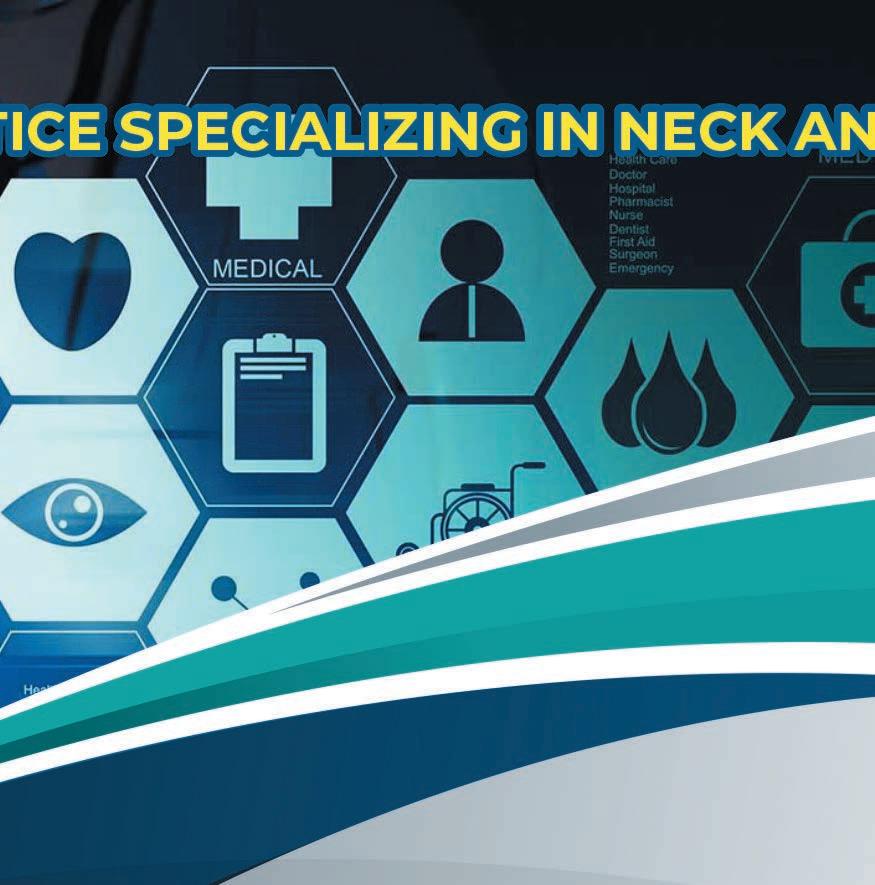
























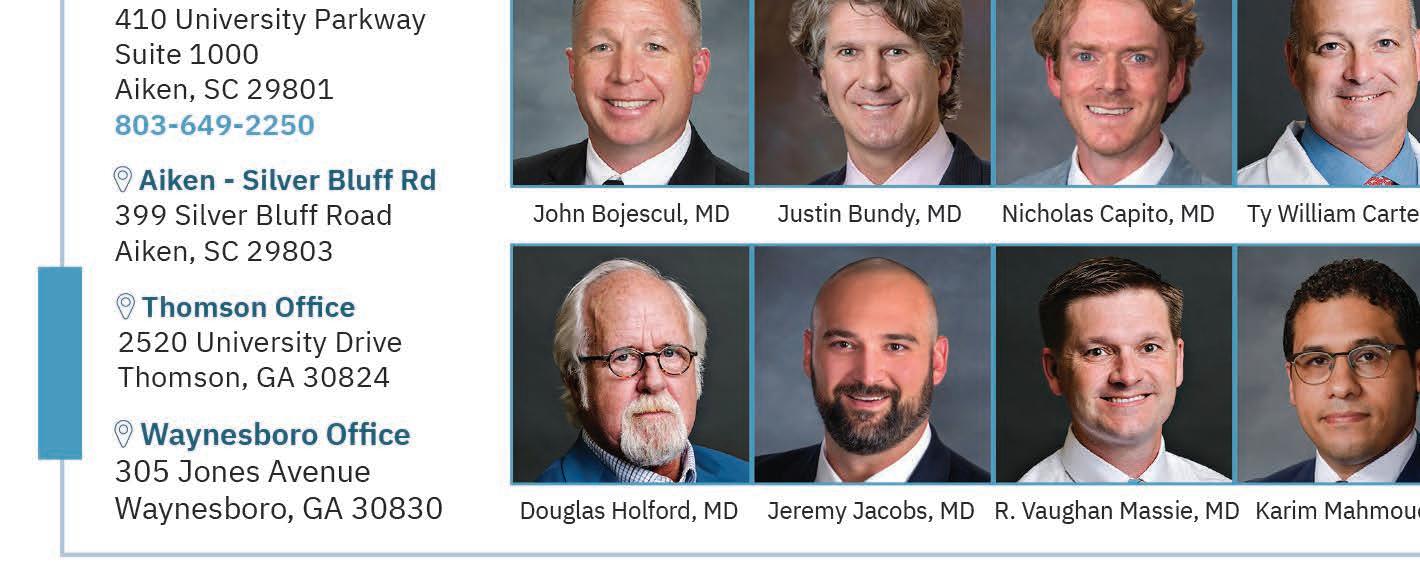

 Kenny Bishop
Kenny Bishop
There were several changes to the Georgia Workers’ Compensation Act as a result of the recent House Bill 1409, which took effect July 1, 2022. It appears, the Georgia legislators took a page out of Michael Jackson’s book and decided to take a look in the mirror and make a change. Included in these changes were amendments to the maximum compensation rate, which will impact indemnity benefits for any date of injury on or subsequent to July 1, 2022. The increase in income benefits are not retroactive. The maximum Temporary Total Disability (TTD) rate increased from $675 to $725 per week. Chamone! Likewise, the maximum Temporary Partial Disability (TPD) rate increased from $450 to $483 per week. Along with these changes, the maximum indemnity benefits recoverable by a surviving spouse with no dependents increased to $290,000 from $230,000.


Further, there were a few changes to the Board Rules, including the procedure for disputing medical charges and/or treatment. These changes were enacted to stop any smooth criminals. For any disputed medical charges under Board Rule 203, the challenging party must (1) file a request for peer review with a peer review organization authorized by the Board—now listed on the Board’s website—within 180 days—under the prior Board Rule 203, we only had 30 days to dispute it—of the payment, reduction, denial, or decision on an appeal of charges by the employer/insurer, (2) serve a copy of the request and supporting documentation upon all parties and counsel, and (3) follow the rules of the peer review organization with respect to any required additional copies. No penalties or interest will accrue on disputed charges submitted to peer review until the peer review organization makes a decision regarding the disputed charges. Penalties for late payment will not apply until after a decision by a peer review organization, or a final decision of an Award after hearing, whichever is later. The amendments also featured subsections prohibiting peer review services for future/prospective medical treatment charges and for determination of medical necessity.



Last, there were changes to Board Rule 205. The only change to this Board Rule was that all medical services covered under O.C.G.A. 34-9-200 are now included in the Petition for Medical Treatment process. The old rule only covered treatment and testing, but the new rule includes all medical services and items prescribed by an authorized treating physician. For example, if Billie Jean was recommended a prosthetic, DME, spinal cord stimulator, hearing aids, eyewear, etc. by her ATP and the employer/ insurer did not indicate whether the medical item would be authorized or not authorized, since the employer/insurer was not her lover, she could file a PMT to expedite the recommended medical item by the ATP.


Since the pandemic, employers and medical providers have become distant due to limited visits to facilities and staffing challenges/changes.
Yet, employers realize their involvement in their employee’s medical treatment after a work injury is valuable. Injured workers have a limited understanding of their treatment plan and protocols, which causes a significant oversight of communication.
The medical provider’s role is critical to the injured worker, as well as the importance of always clearly communicating the care plan. So, partnering closely with medical providers offers the best outcomes for both employees and employers.

To start looking at partnering more efficiently, employers and medical providers suggest the following:
• Establish a profile of contact information for the employer and their protocols, sharing all locations and contacts.


• Create a good contact source to ensure access to all parties.
• Provide written job descriptions to your medical partners, including photographs, if possible.
• Be clear about what is available with medical facilities and never assume it’s a one-stop-shop. Know what they have, for example, diagnostic and physical therapy services.
• Have medical providers share the availability of services, including hours and weekend access.
• Schedule a meeting with all providers and outline expectations to ensure the partnership benefits all.


• Ask for pricing of services, medication dispensing, and other services offered, including weekend access.
• Inquire and consider offering transportation to injured workers’ appointments to ensure their attendance.
• Consider utilizing telehealth/telemed on minor issues and/or follow-up appointments.
• Educate employees on different mental and behavioral health issues and topics.
• Meet the hospital representative in your area and inquire about other non-emergency services as well as any free seminars offered to your employees.
• Discuss transitional duty positions and be clear on their availability.
• Invite all medical providers to the facility and meet with lead managers, safety team members, and human resources personnel.
• Inform medical providers of machinery and all operations for medication dispensing.
• Educate employers and management on the use of regimented medications such as those used for high blood pressure and diabetes.
• Build a rapport between all parties including pharmacy, physical therapy facilities, dentists, specialists, or any other medical personnel or providers you work with.
• Inquire about free services with providers such as nutrition, controlling diabetes and high blood pressure, exercise, smoking cessation, etc.
• Check out the vending machines and offer healthier suggestions.
• Include claim professionals in these meetings so they’re aware of services and communications with all parties.
• Respect everyone’s time during business time.
• Minimize and simplify paperwork to include what is authorized and contact information to their carrier.
• Ask the employee about their appointment(s) outcome and address any concerns immediately.
• Always compliment great outcomes and care in any situation.
All of the above will impact the best outcome for everyone.
Roberta Mike is a senior field claims adjuster for Strategic Comp, a division of Great American Insurance Group and the past president of Atlanta Claims Association. She began her career forty years ago at Travelers Insurance Company in New York, and also worked for Fireman’s Fund Insurance Company in New York and Georgia, Ryder Claim Services, and Zurich North America, and Muller Water Products . Roberta served as president for Atlanta Association of Insurance Professional (AAIP) which is a local chapter of the National African American Insurance Association. She is a recipient 2017 Recipient Claims Person of the Year and Pioneer’s Award of 2018.
























 Ben Vinson, Chairman and Chief Appellate Judge
Ben Vinson, Chairman and Chief Appellate Judge


Happy Fall Y’all! I hope everyone had a great summer and now we can look forward to cooler weather and enjoying some outdoor activities. On behalf of the State Board of Workers’ Compensation, I am proud to report we are having a successful 2022 with a continued increase in all types of proceedings and board functions. The Board remains in good health and we finally saw the return of many of our traditional in-person events this year.
We were thankfully able to host our regional seminars and our annual conference in person… just like the old pre-pandemic days. The Public Education Committee of our Advisory Council organized an exciting program for the regionals that was filled with important information and perspective on several hot topics.
We were delighted to take the show on the road to five (5) cities across the state: Cartersville, Columbus, Athens, Savannah, and Alpharetta. I enjoyed visiting each city and speaking with industry representatives to discuss all types of issues. Fittingly, the theme of our annual conference was “Return of the Champions” to recognize the Braves and Dawgs championship seasons and our return to the field to move past the pandemic and gather together for a large, meaningful event. We appreciate all who participated by sponsoring, exhibiting, speaking, and attending.
In June, I joined the GWCA Spring conference at Jekyll Island and provided a legislative update. The Georgia General Assembly convened the 2022 Session on January 10 and adjourned Sine Die on April 4. As predicted, three issues emerged that directly affected the world of workers’ compensation: 1) a presumption for first responders with PTSD, 2) a measure to address the coverage gap with PEOs, and 3) a $50 increase in the max TTD rate. While the PTSD and PEO issues did not pass into law, the TTD bill passed overwhelmingly and was signed into law. Our Advisory Council, led by Bobby Potter, was engaged on each issue and proved quite helpful as the legislative process played out. Importantly, we had many good discussions with policymakers on these and other topics to preserve a stable and balanced workers’ compensation system for all stakeholders.
This summer, the Board reconsidered its guidelines for in-person hearings and revised them on June 27 to reflect the most recent information from the Center for Disease Control (CDC) and the Georgia Department of Public Health. The new guidelines lift many of the screening and other protocols while leaving in place a streamlined process to limit participation by parties that are sick. The guidelines are posted on our website and reflect the goal of our staff to remain on mission and operate the Board effectively and efficiently.
As a final note, I am glad to announce that the Board has a new office location in Savannah at 35 Barnard Street, Suite 301, Savannah, GA 31401. Have a great second half of 2022 and I look forward to seeing everyone at various events this fall.
















































































































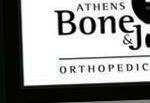


















































































































































































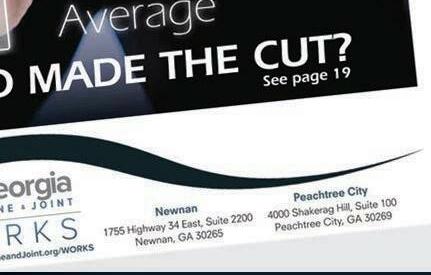



















































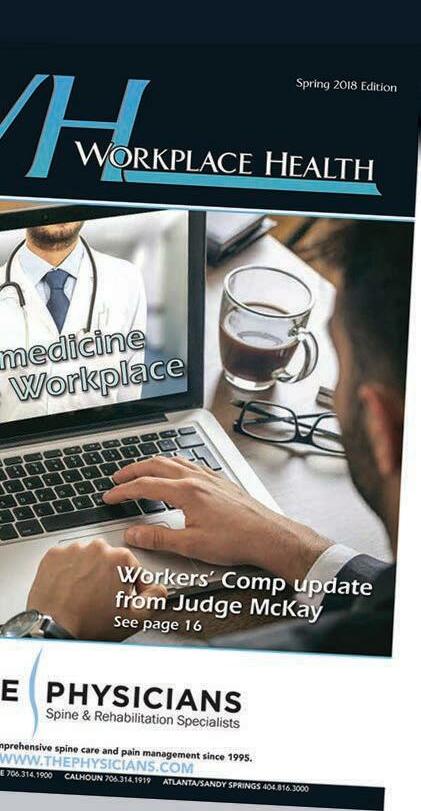


























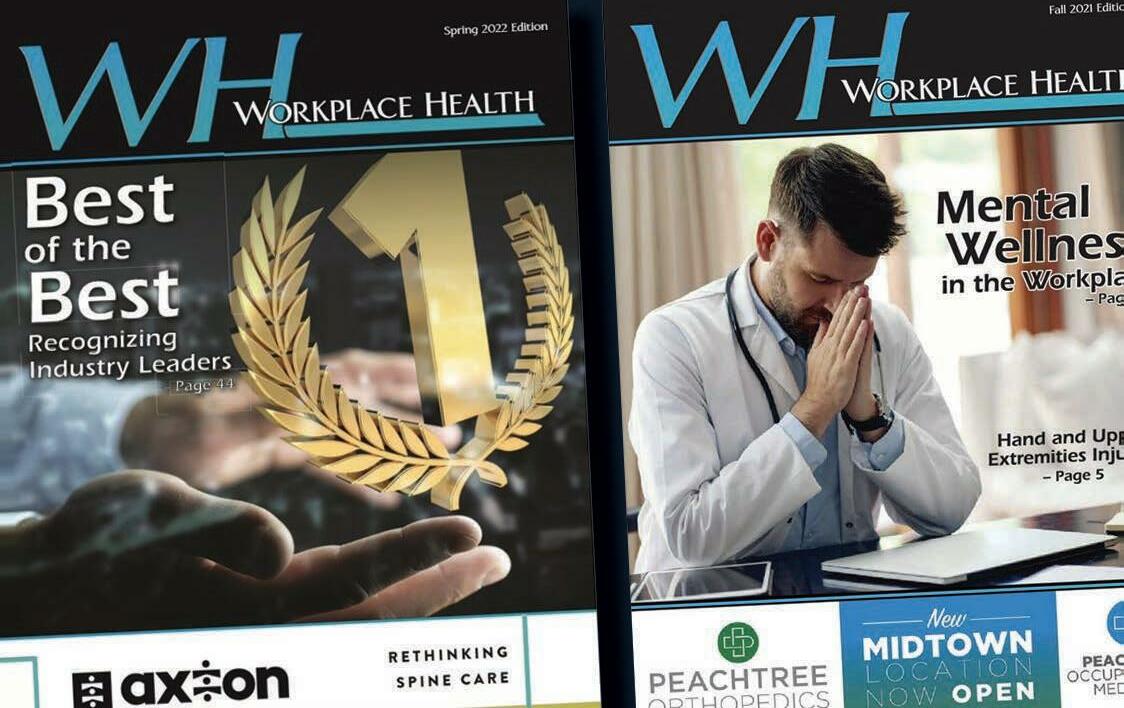






























After an incident occurs, how many times have you heard or even said, “What were they thinking?” Not knowing what led up to the incident, it is easy to assume what they should have done.
In the past, we would do an accident investigation, what thoughts come to your mind when you hear the word investigation? Most would answer that they would question the witnesses, management, and employee/ employees assigned to the task, and anyone who was injured. The word “investigation” can give a negative connotation and automatically puts everyone on the defense.
In order to determine “What Were They Thinking?” you may need to change the way you look at your safety culture. The assumptions, values, and beliefs that people and companies hold onto can strongly influence the way they react after an incident.
The first place to start is by building trust with employees. You must look at safety differently than you have in the past. The safety culture must include open communications at all levels, from management to front-line employees, and peers. The more people involved in the safety of your organization, the better the outcomes.


Instead of an investigation, we need to use this opportunity for an event learning to determine what happened leading up to the incident. An event learning is comprised of the employee, their peers, and management. It is one step in human performance that allows the employee to explain what they were doing and thinking before the incident. Human performance addresses the roles of individuals, leaders, and organizational improvements. Employees are more likely to openly communicate when given an opportunity to be heard. The outcome of the event learning can give helpful insight into preventing the same incident from occurring in the future, which could save lives.
The Five Principles of Human Performance:
1. People are fallible, even the best people make mistakes.
2. Error-likely situations are predictable, manageable, and preventable.
3. Individual behavior is influenced by organizational processes and values.
4. People achieve high performance largely because of encouragement and reinforcement received from leaders, peers, and subordinates.
5. Events can be avoided through an understanding of the reasons mistakes occurred and the application of the lessons learned from past events (or errors).
When it comes to safety, I am a firm believer in human performance. I have experienced first-hand the positive impact of reducing error, managing controls, and improving leadership and culture, as well as putting a new perspective on human error.












The exodus gates throughout American businesses are still open and only spreading. News outlets and other watchdog agencies report what the United States has seen since early 2021, when Anthony Klotz, Organizational Psychologist at Texas A&M, coined that The Great Resignation is happening globally.
Sources indicate that “The Great Resignation” phenomenon continues in the United States (US), breaking records over the past eleven (11) months with 2.8% of the workforce (or four (4) million people) resigning monthly. There is a deeper conversation around who is resigning, why they leave, and what happens after they exit, which has sometimes been referred to as “The Great Regret.”
The challenge is real for employers dealing with both sides: the resignation and the regret. The solutions aren’t simple, either. Many workers resign for more money; therefore, with hourly wages increasing at a six percent (6%) pace higher than any level dating back to 1997, this is a problem. The biggest sectors hit are travel, hospitality, and retail. Nonetheless, the hourly wage issue isn’t keeping pace with inflation and many sectors cannot balance price increases with a wage increase. The solution to staff retention isn’t as simple as increasing pay.
Employees who have resigned or considering doing so cite that they are doing so for the betterment of their everyday lives. The worker is looking for a clean slate, a “redo” of sorts that may include focusing less on the materialistic and more on the family, improving themselves, and decreasing negative (outside) influences.
A recent Fortune magazine article by Gaelle de la Fosse showed over a third of resigners who expressed buyer’s remorse also felt their work-life balance had declined (36%), and about a third (30%) said their new job was different than what they were led to expect, and one in four (24%) said they missed the culture of their old job. The COVID-induced “clean slate” change has employees moving to a “less is better” philosophy. This idea teaches employees and employers that they can work with less overhead and less stress from home and still produce good results. Ongoing debates about remote work cite versus work-life balance can improve productivity, but innovation and creativity can suffer.
Any mutual benefits of this new balance still do not solve the problem of the exodus.
No one size fits all.
Employers are moving toward a proactive approach, offering flexible, remote, or hybrid work schedules. Bonuses, incentives, or pay increases are on the table, as are mental health benefits to employees as an additional incentive to combat stress. Although employers are tackling the Great Resignation head-on, employees are still resigning. While some experts report not seeing the trend ending anytime soon, others are questioning a shift.
It’s obvious the Great Resignation has affected all employers. It is not preventable, but it is manageable. Listening to employees and appropriately addressing concerns is a great start to a more productive and meaningful work environment.














One of the main components in workers’ compensation claims is the ability and willingness of the employer to return an injured employee to light duty work, as well as the motivation of the employee to return to suitable work. The importance of light duty work in workers’ compensation claims should be viewed from both the employee’s and the employer’s perspective.





The Employee
The initial thought is many employees would prefer not to return to work (light duty or regular duty) and would simply rather settle their case. However, for those employees who wish to return to light duty, this can be beneficial for their physical recovery. They are not sitting at home focusing on their injury and/or their medical treatment. Rather, they are now focusing on a return to actual work. They are interacting with co-workers and are back on a regular schedule of returning to work every day. From a medical standpoint, this is a much better perspective than sitting at home.
Light-duty work can also help the employee financially. They can earn closer to their pre-injury wage, if not their full wage, by returning to light duty work. Even if they are not working the same number of hours as before, the employee could be entitled to temporary partial benefits, which can increase their weekly income, and certainly would be more than temporary total benefits.
Additionally, accepting light duty work can help an employee from a medical standpoint. It keeps their doctors involved and up to date in their claims by having to analyze and approve light duty positions, giving goals to the employee for a progression to return to work, and is rehabilitative, as compared to palliative where an employee simply sits at home. Light duty work allows the employee to see what they can do physically, and to push forward for a full medical recovery. Offering light duty demonstrates to both the injured employee and fellow workers that they are a valued part of the company and allowing a return to work keeps all employees motivated. Finally, a return to light duty work, from the employee’s perspective, could certainly help them if they are interested in a settlement. It shows the employer they are willing to work, even if the light duty work may be for a long period, or even permanently. Rarely does an employer want to provide permanent long-term light duty. This will put pressure on the employer to resolve the claim fairly and reasonably.
The Employer
The employer can also reap significant benefits by offering suitable light-duty work to an injured employee. First and foremost, it reduces the employer’s indemnity exposure. By having an employee return to work, the employer is paying wages, not temporary total benefits, and they are paying for work to be done, not for an employee to be sitting at home doing nothing. It also sends a message to the employee that more is expected of him or her than to stay at home.
Second, it is good for the morale of the employer and fellow employees. Many employees could be disgruntled knowing that their fellow employee, who was injured on the job is sitting at home while it is clear they can perform light duty work. An employer who provides suitable light duty work (and not make up work), demonstrates to other employees that the employer is willing to take the extra step to bring the injured employee back to work, which improves morale for all employees. Moreover, in this day and age of a staffing shortage, providing modified work can stabilize the employer’s workforce, and avoid the need to hire temporary workers to fulfill a position that an injured employee can fill.
Finally, and most importantly, the provision of light duty work creates leverage for the employer to settle a case. Many employees, while professing a desire to return to light duty work, in reality simply want to resolve their case, and exit the workers’ compensation system altogether. By having light duty work, it allows an employer to put pressure on the employee to resolve their case because otherwise, their choice is to return to light duty work, which many do not want to do, or receive a lump sum and move on with their life. It is important for an employer to have a light duty program that is consistently offered to all injured employees to reduce the life of their workers’ compensation claims and to reduce the employer’s exposure.
Mark J. Goodman is a partner at Swift Currie McGhee and Hiers and defends employers throughout the state of Georgia in workers’ compensation claims. He is a member of the SBWC Chairman’s Advisory Committee on the Public Education Committee and lectures frequently to employers in Georgia on various issues.
Is anyone concerned that we have seen the largest back-to-back indemnity benefit increase in the history of Georgia’s Workers’ Compensation system? Proponents argue the weekly indemnity rate is one of the lowest in the nation, which is true.
But—and there always is a but…
The most recent Compscope report from the Workers’ Compensation Research Institute (WCRI) details that we have one the highest indemnity benefit payout of any state in the 18-state study. So, despite having the lowest indemnity rate of any state in the study, Georgia’s indemnity and expenses are forty-eight percent (48%) higher than the median of the other states in the 18-state study (California’s TTD cap is 1,356 and Illinois’s TTD cap is 1,734).
In Georgia, over forty percent (44.2%) of claimants retain counsel, and claimants in our state have a much longer duration of disability. This study was completed before the back-to-back indemnity increases. With Georgia’s TTD and TPD rates increasing at a record clip, you can expect the disparity of higher indemnity and litigation expenses in Georgia to continue. Short of legislative changes needed to address the “why” behind our length of indemnity and high attorney involvement, employers need to meet this challenge by digging to improve their risk management program.
The good news is our system has not seen many changes since 1994 and that stability has created a predictable system.
In 2002, I developed a process called comP4®, which takes a holistic approach to Workers’ Compensation. It looks at twenty-one (21) activities from Pre-hire, Post-offer, and Prevention to Post Claim. Here are my Top 10 comP4® tips for managing Workers’ Comp:
1. Develop a safety culture that the employee feels on Day 1 of hire. We recommend an employee safety perception survey every three years to ensure your safety culture is thriving.
2. Develop written job descriptions including physical demands analysis to be used in the hiring process. These job descriptions are essential to Board Rule 240 and will significantly reduce the lag time in getting employees back to work.
3. Become a certified drug-free workplace and utilize a refusal of treatment form.
4. Utilize an effective post-offer health questionnaire.
5. Develop a meaningful new hire and ongoing safety training program. In addition to meeting your Occupational Safety and Health Administration (OSHA) obligations, the Burdette case also established a willful misconduct defense for employees willfully refusing to follow safety rules. An effective and accountable safety program creates accountability. The goal of every safety program is to send employees home safely every day.
6. Establish a safety committee to gather feedback and share safety information.
7. Discipline employees who fail to follow safety rules and training. Points 5, 6, and 7 are keys to establishing a Burdette defense.
8. Create a return-to-work process. **Note, I didn’t say program because you need to include several parties in the process. The employee is involved, but you should also include the supervisor, the medical provider, and the adjuster. I rarely see everyone working together, which creates opportunities for the claimant attorneys to drag out the claim and resolve the case with a settlement accompanied by a voluntary resignation letter.
9. Create a timely incident reporting program. I recommend utilizing a third-party platform to assist customers with their claim reporting and management, but you can develop an internal process. Lag time significantly increases cost, especially in a highly litigated system like Georgia. Therefore, timely reporting along with an
effective incident analysis is a critical part of an effective work comp program. Also, remember, that notice to a supervisor constitutes notice in Georgia.



10. Develop a claim action plan. I recommend a 3/7/21-day plan. Claims that start on track through the first 21 days typically stay on track.
Here is the 3/7/21-day plan:
• 3 days – review the claim to determine if it is medical only or if you think it will become a lost time claim. If you believe it will become a lost time claim, activate the 7 and 21 day plan.
• 7 days –the employer should be sending things to the adjuster to help them manage the claim. This could include a circle and signed copy of the panel, the WC-207, the incident report, and a copy of the post-offer health questionnaire.
• 21 days – the adjuster has reviewed all the information, including their own internal info (like the ISO report), and makes a compensability decision.


Education and communication are the two keys to managing a Workers’ Compensation claim. If the employee trusts the employer before the injury, they are far less likely to retain counsel after the injury. According to Clara Analytics, litigated claims increase costs by 347%, so investing in an integrated Workers’ Compensation program makes cents.


Georgia has enjoyed a ten-plus-year run where rates have declined. With the recent indemnity increases coupled with expanded litigation costs, Georgia employers will most likely see rate increases soon. Now is the time to build an accountable and effective workplace safety program.
Steve





























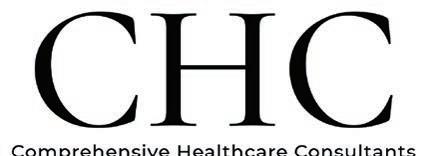






























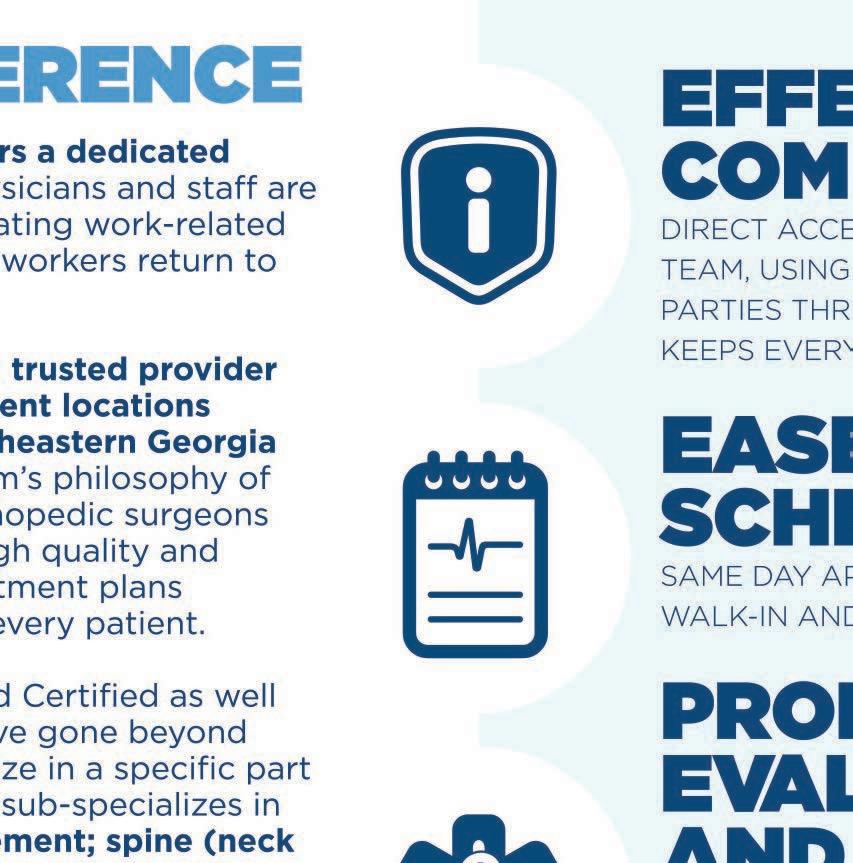


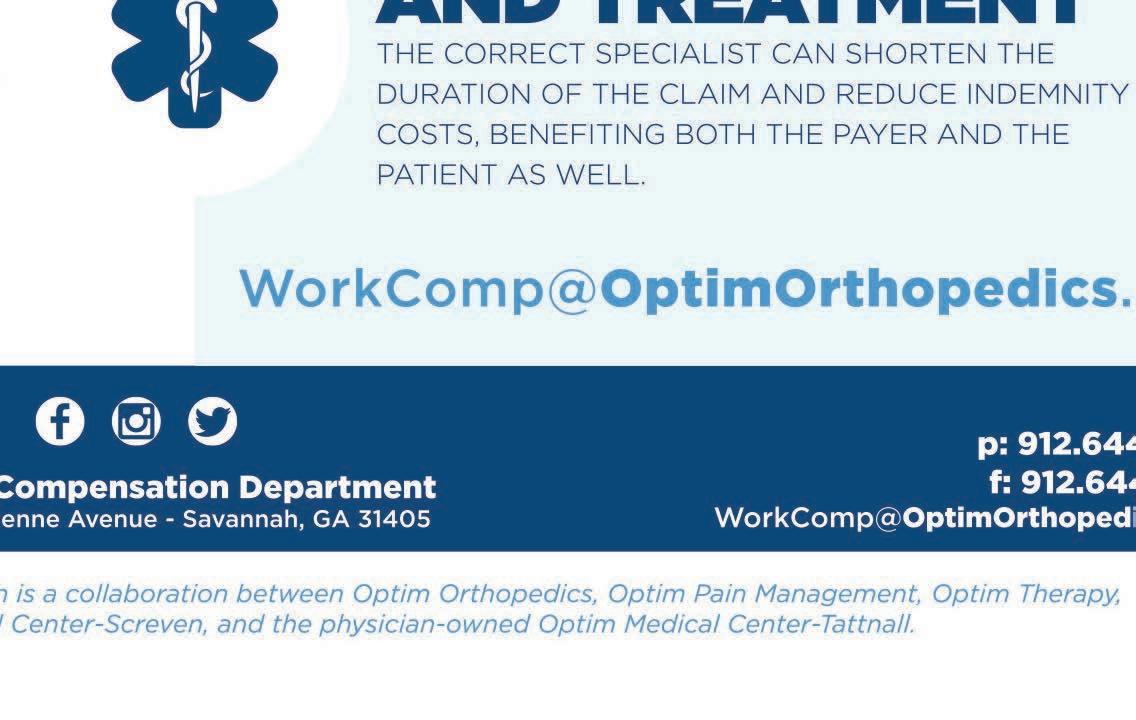

The U.S. Occupational Safety and Health Administration (OSHA) has launched a national emphasis program (NEP) to help prevent heat-related illnesses in outdoor and indoor workplaces. The program, CPL 03-00-024, entitled “Outdoor and Indoor Heat-Related Hazards,” was announced by Labor Secretary Marty Walsh with Vice President Kamala Harris at a union training center in Philadelphia.
Under the program, OSHA will conduct, in certain outdoor and indoor workplaces, programmed inspections on any day for which the National Weather Service (NWS) has announced a heat warning (105° Fahrenheit or higher for at least two days) or advisory (100° Fahrenheit or higher for at least two days) in the local area. Those workplaces include the high-hazard industries named in Appendix A to the program.
The NEP also requires OSHA inspectors conducting an investigation or inspection not related to heat hazards to open a heat-related inspection if a hazardous heat condition is recorded in an OSHA 300 log or 301 incident report, or if an employee brings a heat-related hazard to the inspector’s attention. The program also will require inspectors to ask during non-heat inspections whether the employer has a heat-related hazard prevention program that applies when the heat index for the day is expected to be 80° Fahrenheit or more. The NEP requires each OSHA regional office to double its number of heat-related inspections. We have already seen many seemingly unrelated OSHA inspections get expanded into heat hazards. For example, an inspection following a trenching incident in May in South Florida was expanded to include a heat-related inspection based just on the heat index. OSHA has spent far more time focusing on the heat issues than the trenching issues.


During heat-related inspections, the program requires OSHA compliance safety and health officers (CSHOs) to:

• Review OSHA 300 logs and 301 incident reports for evidence of heat-related illnesses
• Review records of heat-related emergency room visits or ambulance transport
• Interview workers for symptoms of headache, dizziness, fainting, dehydration, or other indicia of heat-related illnesses
• Document the existence of conditions, such as high temperature, that cause the heat-related hazards
• Determine whether the employer has a heat illness and injury program, including whether:



• The employer has a written program
• The employer monitors temperature and worker exertion
• There is unlimited cool water easily accessible to workers
• There are required hydration breaks for hydration
• There are scheduled rest breaks
• Workers have access to a shaded area
• New and returning workers are provided time for acclimatization
• A “buddy” system is in place on hot days
• Work is scheduled to avoid hot parts of the day
• Job rotation is used to limit heat exposures
• Employees are trained in the importance of hydration, heat illness signs, first aid, and summoning of emergency personnel
An interesting aspect of the directive is its reference to the legends and heat index ranges used by the National Weather Service’s heat index chart—“Caution” (80°F – 90°F HI), “Extreme Caution” (91°F – 103°F HI), “Danger” (103°F – 124°F HI), and “Extreme Danger” (126°F or higher HI). OSHA knows, after the scientific bases for these legends and ranges were questioned, its attorneys declined to rely on them and an administrative law judge of the Occupational Safety and Health Review Commission (in a case handled by my firm) found they lacked a scientific basis.
Employers with possible exposures to heat hazards may want to consider reviewing:

1. Policies - review and update (or create) a written heat illness and injury program; consider using a post-offer medical questionnaire that includes questions about conditions or medications that heat exposure may exacerbate.

2. Training - train employees on recognizing symptoms and supervisors on the entire program and how to handle emergencies
3. Compliance - monitor heat exposure projections and compliance with the program
4. Enforcement – take action when the program is not followed
These actions will help keep workers safe from heat-related illnesses and injuries and avoid or minimize any OSHA inspections or citations.


For injuries to be compensable under Article 3, the injury must be caused by an accident that “arises out of” and occurs “in the course of” the employee’s employment. Although these terms are of great importance when deciding whether a claim is compensable, the Alabama state legislature did not provide definitions for the terms. Without a clear definition, the Courts have been forced to interpret these terms and apply them to cases.
When a fall occurs during employment, there is often no dispute that the employee’s accident occurred “in the course of” his or her employment or within the period of employment at a place where the employee would reasonably be and while the employee was reasonably fulfilling employment duties or engaged in doing something incident to it. Rather, the issue presented is whether the employee’s accident arose out of his or her employment, i.e., whether there was “a causal relationship between the injury and the employment.” Dunlop Tire & Rubber Co. v. Pettus, 623 So.2d 313, 314 (Ala.Civ.App.1993). Simply put, suffering a fall while at work does not automatically create a compensable injury.
What has been revealed by the application of the arising out of requirement by Alabama courts is the distinction between accidents that are somewhat attributable to an employment (their job) contribution and those attributable solely to what is called idiopathic factors. This term refers to an employee’s preexisting physical weakness or disease that is peculiar to the individual employee. Ex Parte Patterson, 561 So.2d 236. Thus, a fall may, under the appropriate circumstances, properly be deemed an accident arising out of employment... in contrast, a fall may, under circumstances showing an idiopathic factor, not be an accident arising out of employment. Ex Parte Patton, 77 So.3d 591.
In Walmart v. Morgan, a cashier was walking to her register when she fell and broke her wrist. The Court put emphasis on the arising out of element of compensability and concluded it because the cashier did not know what had caused her to lose her balance and had admitted the workplace probably had nothing to do with the accident in which she was injured, no substantial evidence supported the proposition that the cashier’s injury arose out of her employment. The complete unknown reason for the fall as well as the acknowledging that her employment played no role in the injury failed to establish that the injury arose from the employment. Therefore, the claim was denied compensability as an unexplained fall.
Unexplained falls, as in the Walmart opinion, emphasize the need for a causal connection between the accident and the employment. However, the Courts have found a difference between a truly unexplained fall and one where the circumstantial evidence implies a workrelated cause for the fall.
Examples of somewhat similar situations have occurred when an employee falls or trips on something uncertain. In Crown Textile v. Dial, the employee testified that he “tripped over something” on the floor of the room and fell, breaking his hip. The trial court found the evidence to support the employee’s claim that the accident arose out of and in the course of his employment as it was established through testimony that the employee was required to walk back and forth on a floor littered with debris. The Courts have also found
this to be the case when the employee works on uneven ground, in dark areas, or when they are required to run, balance, or perform awkward physical tasks as a requirement of their employment.
When a fall occurs at work and there hasn’t been an increase in the risk of a fall or injury, then the fall may not be found to be compensable. The two most common examples are the idiopathic and unexplained falls. Idiopathic has been defined in the medical community as arising spontaneously or from an obscure or unknown cause. However, the Courts in Ex Parte Patterson explained this term differently as relating to an employee’s preexisting physical weakness or disease peculiar to the individual. If an employee is standing on a level surface and suffers a fall from a seizure, illness, or viral condition, then these falls will be considered idiopathic. These types of injuries should not be found to be compensable without the employment contributing to the fall.
Since the employee bears the burden of proving a definite causal connection between the accident and the employment, an unexplained fall does not generally arise out of the employment. To be clear, an employee is not required to know specifically what he/she tripped over, but it is more associated where there does not appear to be any clear reason for the fall and the employee’s statement or testimony does not properly explain the cause of the fall concerning the employment.
While these examples give some guidelines when addressing employee falls, the application still must take place on a case-by-case basis. The most valuable information is the initial statement received from the employee or witness providing detail as to how and why the fall occurred. This is the best time for the questions to be asked regarding what, if anything, caused the fall or if there was anything relating to the employment that attributed to the fall or injury.

Michael (Mike) Barratt graduated from the University of North Alabama in 2001 with a Bachelor of Science degree in Political Science. He received his Juris Doctorate degree from Mississippi College School of Law in 2004. Mike has focused his practice on Alabama Workers’ Compensation cases, representing employers, insurance carriers, and third-party administrators in all aspects of workers’ compensation.



Disclosure: Event dates could be postponed, cancelled, or virtual. Please use the following as a guide. If you would like your event added to the Workplace Health magazine calendar of events, please contact Michelle Wilds at michellewilds@selectonenetwork. com. Workplace Health magazine would love to come and cover your event.

September


7-9 – Georgia Safety Health and Environmental Conference –Savannah, GA
8 – Alabama Workers’ Comp, Department of Labor – Winfrey Hyatt, Birmingham, AL
28-30 – Georgia SHRM Annual Conference – Savannah, GA
October
4 – Physio/Emory Educational Symposium – Atlanta (Date Tentative
6 – Alabama Workers’ Comp, Department of Labor – Winfrey Hyatt, Birmingham, AL
6 – Talent Management Summit SHRM – Jacksonville, FL
11 – Georgia Workers Compensation Association Fall Conference – Atlanta, GA
19-21 – National Workers’ Comp and Disability Conference – Mandalay Bay, Las Vegas, NV
November
10-11 – RIMS ERM ConferenceIndianapolis, IN
December
1 – Legal and Legislative SummitSHRM Jacksonville, Jacksonville, FL
February 2023
2-3 – Atlanta RIMS Chapter Educational Conference – Cobb Galleria, Atlanta, GA
April 2023
30-May 3 – National RIMS- Atlanta, GA
June 2023
4-7 – National PRIMA - San Diego, CA
4-6 – Georgia Workers’ Compensation Association Spring Conference- Jekyll Island, GA

Physicians have become “providers” in modern systems of healthcare. They order tests, prescribe medications, and offer interventions. Physicians are good at these kinds of things. They can be, however, neglectful in recognizing the importance of clear, timely communication with third parties. This component of delivering workers’ compensation care is outside of the typical purview of a physician’s day-to-day.
It is for this reason that all too often medical providers often do not see themselves as part of the return-to-work process. The friction built into the process of facilitating return to work can make physicians imagine this should be someone else’s job (or at least wish it so).
The truth is physicians are a critical part of the process of facilitating a successful return to work for an injured worker. Studies conducted by the U. S. Department of Labor have shown those employees who have been treated by physicians who more frequently used the recommended best practices experienced a quicker return to work than those not employing best practices.
Communication is critical to successful outcomes. Many studies from researchers cite poor communication from medical providers as the number one issue causing delays in returning to work. All communication does not have to be poor. Reports from the American Medical Association (AMA) have shown when communication is effective, timely, and in line with best practices, the result for the injured employee is fewer disability days and for the company is lower disability costs per employee.
Here is a list of three (3) items physicians can do to improve communication and be better facilitators of a successful return to work:
1. Clarify the use of terms and definitions shaping the process of return to work. Terms like restriction, limitation, and tolerance have very specific meanings to adjusters and employers. However, physicians may have a looser sense of the definitions of these terms. These differences have real meaning in the workplace and the area of workers’ compensation. To do our jobs well, physicians need to use them deliberately. The restriction is defined by the AMA as “what the patient should not do based on risk or harm.” Limitation is defined as “something the patient cannot physically do.” Tolerance, on the other hand, is related more to how comfortable a person is doing a given task.
2. Provide streamlined, clear forms to communicate restrictions, limitations, and expectations. A return to work/work status form should be supplied for every office visit. Remember, it’s not your job as a clinician to decide IF the patient returns to work, only to help safely navigate the necessary restrictions to avoid additional injury or exacerbation of the employee’s existing injury.
3. Be available to communicate in order to navigate potential hurdles to positive outcomes. Sometimes, a single phone call is all it takes to clarify matters and smooth the path back to optimal function.
Shane Mangrum, M.D., is an experienced, board-certified physiatrist at Axion Spine & Neurosurgery in the Atlanta metropolitan area. He is double-boarded in physical medicine and rehabilitation, as well as sports medicine. Dr. Mangrum earned his undergraduate degree in organismic and evolutionary biology from Harvard College in Cambridge, Massachusetts. He completed medical school at the University of Utah in Salt Lake City and finished medical training with residencies in physical medicine and rehabilitation at Mayo Clinic and the University of Utah. Drawn to the climate and culture of Atlanta, Dr. Mangrum now resides in Milton with his wife and four children.






























